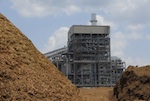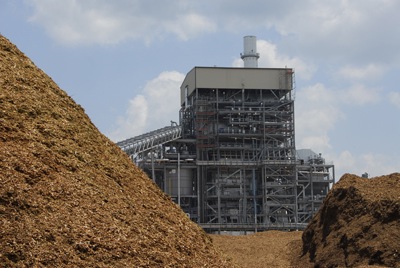
Texas facility awarded biomass project of the year
December 19, 2012
By Metso
 December 20, 2012, Orlando, FL – The Nacogdoches Generating Facility in Sacul, Texas was awarded the 2012 Project of the Year in the Biomass category by Power Engineering Magazine at the Power-Gen international conference on December 10,2012 in Orlando, FL.
December 20, 2012, Orlando, FL – The Nacogdoches Generating Facility in Sacul, Texas was awarded the 2012 Project of the Year in the Biomass category by Power Engineering Magazine at the Power-Gen international conference on December 10,2012 in Orlando, FL.
The Nacogdoches Project represents a Metso-supplied boiler island with the world’s largest BFB Boiler. The project also included Metso Automation Flow Control Devices and a Metso DNA plant-wide distributed control system.
The plant is fuelled entirely by non-merchantable wood biomass materials, with a base load renewable energy option that helps strengthen the nation’s energy security. Abundant fuel supply in the proximity of the plant enables wood waste recycling from the local timber operations, manufacturing facilities, and municipalities. All of the fuel needed can be procured within a 75-mile radius.
“The Nacogdoches project is a success since it plays a key role in preparing the City of Austin to meet its goals for sustainable power generation,” says Dave King, Area President, North America, Power business line, Mesto. “Furthermore, this project would never have been possible if not for the excellent track record of Metso's existing global BFB base, and the ability to design a utility-grade biomass boiler capable of low emissions and high availability."
 |
|
| The Nacogdoches Generating Facility is fuelled entirely by wood biomass materials. Advertisement
|
The boiler is the largest HYBEX boiler in service, designed to produce 930,000 lbs/hr (117 kg/s) of steam and generate 100 megawatts of renewable electrical power. The entire boiler island, including air pollution control equipment and the plant-wide controls, was provided and erected by Metso under an EPC contract.
The 100 MW capacity of the BFB biomass power plant in the United States can generate enough power to supply approximately 60,000 homes with electricity. The plant was built to serve a 20-year contract with Austin Energy to help meet the state’s renewable portfolio standard, with the output serving the City of Austin.
During construction, extreme drought put the water supply for the facility, the Angelina River, in jeopardy – the river became completely dry and was deemed unreliable to supply the facility. Developers constructed a 10-mile water line to a nearby lake that now provides ample water to supply plant operations.
Print this page